Kilimanjaro in Summer: Top 3 Reasons to Conquer (or Chill!) in Tanzania's Sunshine
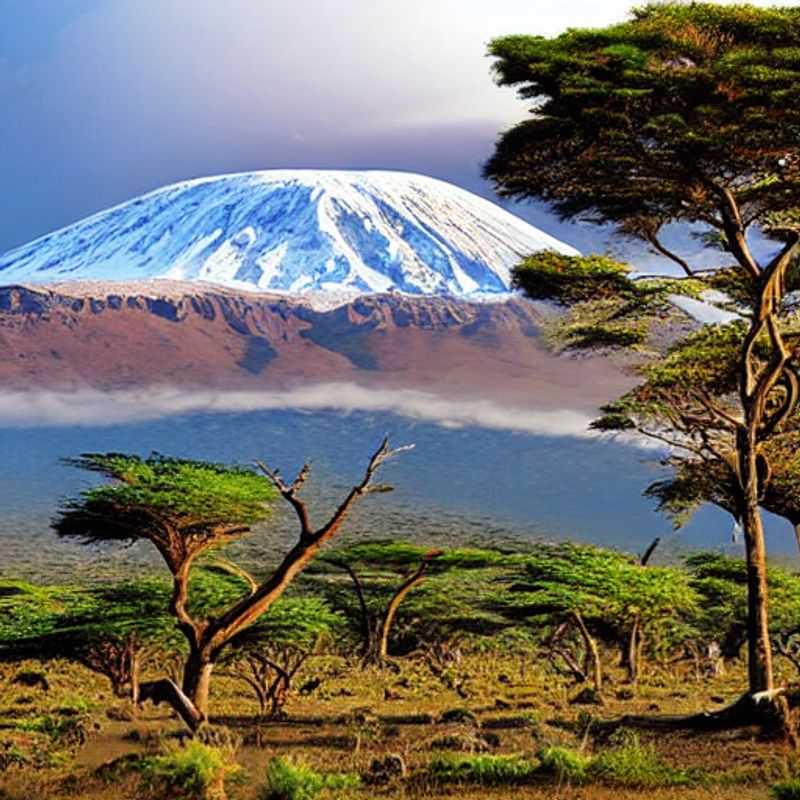
Mount Kilimanjaro 2026: Essential Travel Safety & Preparation Guide
Embarking on a journey to Mount Kilimanjaro, Tanzania in 2026 promises an unforgettable adventure. However, prioritizing your well-being is paramount. This guide offers essential insights into travel safety for your 2026 Kilimanjaro expedition. Thorough preparation is the cornerstone of a safe climb.
Before you even consider booking, understand the altitude and its effects. Kilimanjaro reaches significant heights, and altitude sickness can be a serious concern. Ensure you choose a reputable tour operator that prioritizes acclimatization and has experienced guides trained in high-altitude medical emergencies. Do not underestimate the importance of proper acclimatization; it's a gradual process.
When it comes to physical preparation, regular cardiovascular exercise and strength training are crucial. You don't need to be an elite athlete, but a good level of fitness will significantly enhance your experience and reduce the risk of injury or exhaustion. Familiarize yourself with the gear you'll need; investing in high-quality, waterproof, and windproof clothing is non-negotiable.
Health and vaccinations are another vital aspect. Consult your doctor or a travel clinic well in advance of your trip to discuss recommended vaccinations for Tanzania and malaria prophylaxis. Ensure your travel insurance covers high-altitude trekking and medical evacuation; this is a critical safety net.
On the mountain, listen to your body and your guides implicitly. They are experienced professionals who understand the terrain and the potential risks. Hydration is key; drink plenty of water throughout the day, even if you don't feel thirsty. Avoid overexertion and inform your guide immediately if you experience any symptoms of illness, such as headaches, nausea, or dizziness.
For general safety, be aware of your surroundings, especially in towns and busy areas. While Kilimanjaro itself is relatively safe, petty theft can occur in tourist hubs. Keep valuables secure and out of sight. It's also wise to inform someone back home of your itinerary and expected return date.
Finally, remember that responsible tourism contributes to the safety and sustainability of the mountain environment and local communities. Respect local customs and traditions. By being informed, prepared, and cautious, your 2026 Mount Kilimanjaro adventure can be both exhilarating and safe.
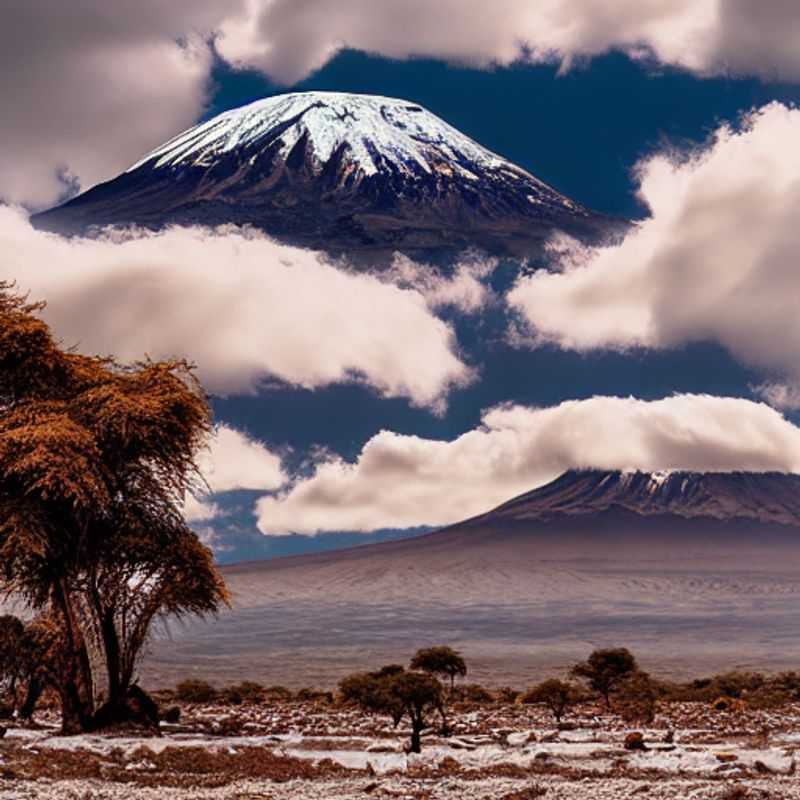
Kilimanjaro in Summer: A Cool Adventure (or, How I Learned to Love the High-Altitude Breeze)?
Sun's Out, Summit's Up? Kilimanjaro's Summer Temperature & Humidity Secrets Revealed!
Beat the Heat (Safely!): Is Mount Kilimanjaro the Perfect Summer Escape?
Kilimanjaro's Summer Sizzle: Fact vs. Fiction – A Guide for Warm-Weather Climbers
Tanzania's Cool Mountain Escape: Exploring Kilimanjaro's Summer Microclimates
Planning Your Kilimanjaro Summer Trek: A Guide to Temperature, Humidity, and Human Connection
More Than Just a Mountain: Human Stories from Kilimanjaro's Summer Trails
Jambo, fellow adventurers! So, you four intrepid business travelers are considering a Kilimanjaro climb during the shoulder season – between winter and spring? Magnificent choice! This time offers a sweet spot: fewer crowds and generally pleasant weather. Let's talk temperatures and humidity, shall we? Expect daytime highs ranging from 15°C to 20°C (59°F to 68°F) on the lower slopes, gradually decreasing as you ascend. Nights, even on the lower slopes, can dip down to near freezing. The higher you climb, the colder and drier it gets – above 4,000 meters (13,000 feet), the temperatures are significantly lower, and the air is much thinner and drier.
Humidity is generally low on Kilimanjaro, especially at higher altitudes. Expect the humidity to be most noticeable at the lower elevations and decrease substantially as you climb. This means less sweat and less discomfort than you might imagine from a tropical mountain. However, layering clothing is crucial to adapting to the changing temperatures throughout the day.
Now, about the cultural experience… The Chagga people, who are indigenous to the area surrounding Mount Kilimanjaro, have a rich and fascinating history. Their vibrant culture is reflected in their traditional houses, often built with strong, local materials. You'll find them cultivating bananas, coffee, and other crops on the slopes of the mountain. Expect to encounter friendly faces and experience their warm hospitality. You might even be invited to partake in some local cuisine; expect dishes featuring beans, plantains, and delicious, hearty stews –a fulfilling culinary adventure in itself!
As for sounds and sights, expect the rhythmic sounds of nature, from the chirping of birds to the gentle breezes whistling through the heather. Nearer to the base, you'll encounter more bustling activity. The music you hear will likely be a mix of traditional African rhythms and contemporary influences. Architecture in Moshi, the gateway town, is a lovely mix of colonial and modern styles.
Regarding costs: A guided Kilimanjaro climb will range from $3000-$6000 per person, depending on the route and level of luxury. This includes permits, guides, porters, food, and camping gear. Internal flights and ground transportation within Tanzania should be budgeted at around $500-$1000 per person. Dining in Moshi and other towns ranges from $15-$50 per person per day, depending on your choices. Expect to pay more for meals at higher-altitude camps. Therefore, a reasonable total cost estimate per couple would be between $12,000 and $24,000, including flights, accommodation, and activities.
Important note: These cost estimations are just guidelines, and actual costs might vary based on your specific choices and preferences. Always confirm prices with your chosen tour operator and book flights and accommodation in advance, especially if traveling during peak season.
So, there you have it – a taste of what awaits you on a Kilimanjaro adventure. It’s a journey that's sure to challenge you physically, yet leave you immensely fulfilled with incredible stories and cultural insight. Remember to pack layers and embrace the adventure, this is one trip that should be cherished forever.
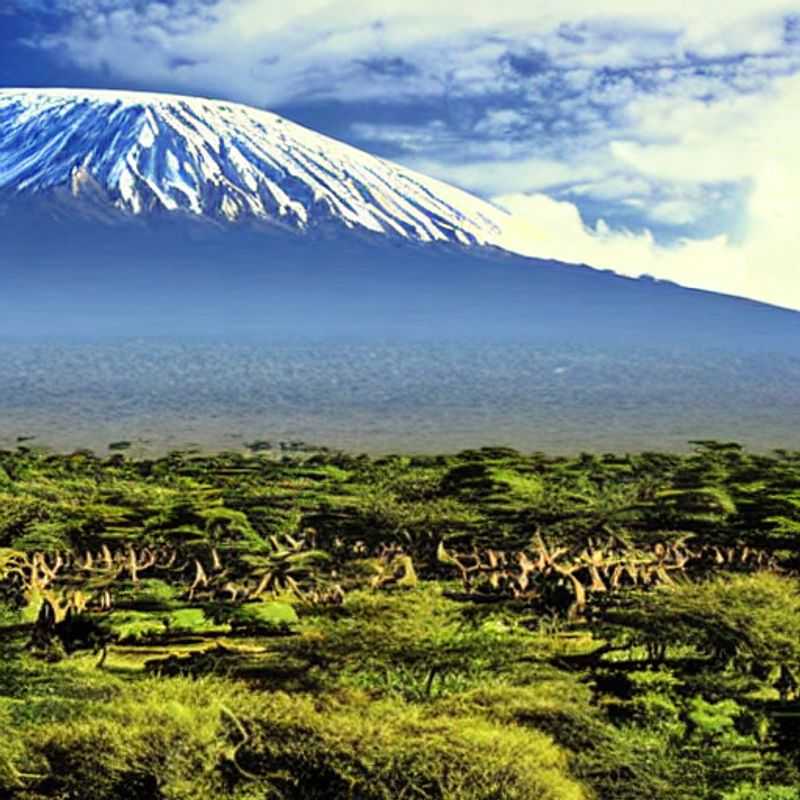
You may also like
Kilimanjaro in Summer: Crowds, Views, and the Human Story
Avoiding the Kilimanjaro Crush: A Summer Traveler's Guide
Tanzania's Kilimanjaro: Is It Too Crowded for Your Summer Escape?
Summiting Kilimanjaro in Summer: A Balancing Act of Adventure and Solitude
Kilimanjaro's Summer Buzz: Exploring the Mountain's Human Side Amidst the Throngs
Beyond the Crowds: Discovering the Soul of Kilimanjaro in the Summer Months
The Kilimanjaro Conundrum: Managing Expectations in the Peak Season
A Summer Ascent: Finding Your Kilimanjaro Moment Amidst the Tourists
Jambo, fellow adventurers! So, you four intrepid business travelers are considering a Kilimanjaro climb during the shoulder seasons – winter and spring? Excellent choice! You'll dodge the peak season crowds, experience wonderfully varied weather, and encounter a unique blend of cultures. Let's craft an unforgettable Tanzanian adventure.
Crowd Density: Winter (June-August) and spring (September-October) offer a sweet spot. You’ll find fewer fellow climbers than during the peak climbing season of January to March. This translates to a more serene trekking experience, less queuing at viewpoints, and better chances of capturing those iconic photos without a sea of people in the frame.
Weather: Expect crisp, cool mornings and evenings, warming to pleasant sunshine during the day in winter. Spring brings slightly warmer temperatures and more rainfall, so be prepared for both sunny spells and potential showers. Packing layers is crucial, regardless of the season.
Local Culture: The Chagga people are the primary inhabitants of the slopes of Mount Kilimanjaro. They are known for their strong coffee cultivation traditions and vibrant culture. You’ll likely encounter many local guides, porters, and cooks who are incredibly welcoming and eager to share their stories. Observe their customs and politeness to show respect. Music will likely be a blend of traditional African rhythms and modern influences.
Food: Prepare for a culinary journey! Nyama Choma (grilled meat) is a must-try. You'll also encounter delicious stews, ugali (maize porridge), and fresh tropical fruits. In Moshi and Arusha (where you’ll likely start and end your trek), you’ll find a variety of restaurants offering both local and international cuisine. Be adventurous and try the local dishes!
Itinerary & Cost (per couple, approximate):
Flights (Round trip): $2,000 - $4,000 (depending on origin and time of booking). Booking well in advance is essential for better prices.
Visas: $50 - $100 per person (check visa requirements based on your nationality).
Guided Kilimanjaro Climb (7-day trek): $4,000 - $6,000 per person (this includes permits, guides, porters, camping equipment, and meals on the mountain). Note: Choose a reputable tour operator for safety and a top-notch experience.
Accommodation (pre and post-climb in Moshi/Arusha): $500 - $1,000 per couple (consider mid-range hotels for comfort and convenience).
Food and Drink (excluding mountain meals): $500 - $1000 per couple (expect to spend more for fine-dining experiences)
Transportation (airport transfers, local travel): $200 - $400 per couple.
Activities (optional): $300 - $500 per couple (consider cultural tours, wildlife safaris, or hot air balloon rides for extra adventure).
Total estimated cost per couple: $7,550 - $12,900 (This is a broad estimate; actual costs can vary based on your choices and booking time).
Important Notes: Altitude sickness is a real concern; acclimatization is key. Purchase travel insurance that covers medical evacuation. Inform your bank about your travel plans to avoid any card blockage issues. Pack light, functional clothing appropriate for varying weather conditions. Above all, embrace the adventure and enjoy the incredible human connections you’ll forge along the way. Hakuna Matata!
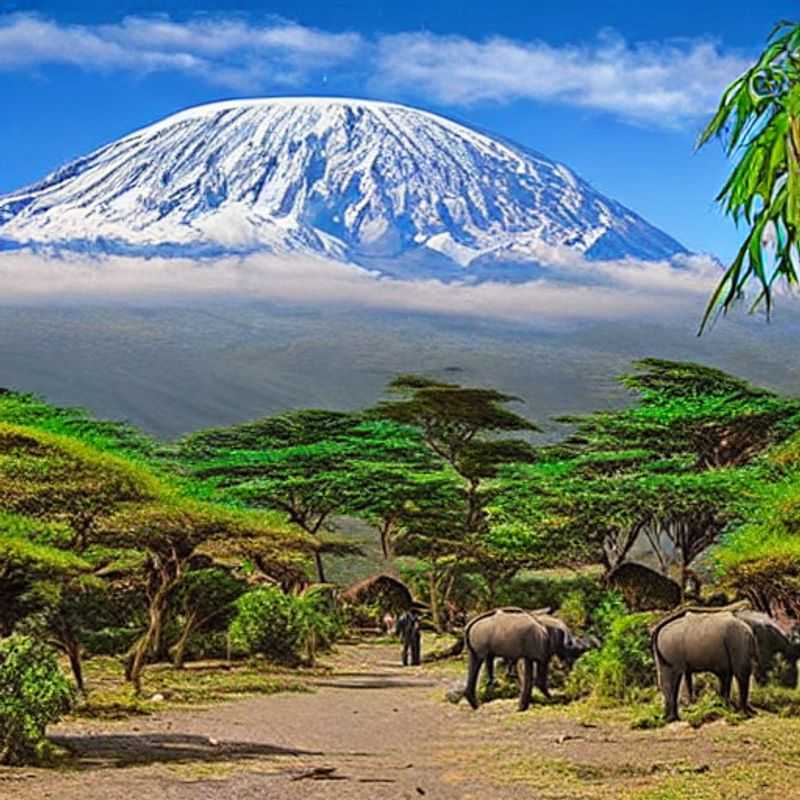
You may also like
Kilimanjaro in Summer: Cool Climates & Air-Conditioned Comfort? A Safari Guide's Take
Beat the Heat on Kilimanjaro: Finding Air-Con in the Shadow of Africa's Roof
Summer Ascent: Is Air-Conditioned Luxury Possible on a Kilimanjaro Climb?
Tanzania's Cool Escape: Exploring Kilimanjaro's Air-Conditioned Options for a Summer Holiday
Kilimanjaro's Summer Secret: Air-Conditioned Havens for the Adventurous Soul
Planning Your Kilimanjaro Summer Trip: A Guide to Air-Conditioned Accommodation & Adventures
Beyond the Summit: Discovering Air-Conditioned Comfort Near Mount Kilimanjaro
Jambo, fellow adventurers! As your seasoned African tour guide, I'm thrilled you're considering a trip to the majestic Mount Kilimanjaro during the shoulder season between winter and spring (June-September or December-March). For the discerning business traveler, Kilimanjaro offers a unique blend of breathtaking scenery and comfortable amenities – yes, even air conditioning!
Now, finding air-conditioned accommodation on the mountain itself is a bit of a quest. While most mountain lodges prioritize rustic charm and eco-friendliness, higher-end lodges near the base, in towns like Moshi or Arusha, will almost certainly offer this comfort. Expect to pay a premium for this luxury; think $150-$300 per night for a comfortable double room with air conditioning. It's an investment in your well-being after a day of acclimatizing to the altitude.
The weather during this period is generally pleasant, with sunny days and cool nights. Pack layers; you'll need them! While the mountain itself can be brisk, the lower regions experience warmer temperatures. Think light hiking clothes, good walking shoes, a warm fleece, and a waterproof jacket.
Speaking of food, Tanzania is a culinary delight! You'll savor delicious Nyama Choma (grilled meat), Ugali (a maize flour porridge), and a variety of fresh tropical fruits. Expect to spend around $30-$50 per day per couple on food, including some excellent meals at your hotel. Street food is also an adventure, but be mindful of your choices!
The local people are incredibly welcoming and friendly. Expect warm smiles and engaging conversations. Tanzanian culture is rich and diverse; you'll witness vibrant traditions, from intricate beadwork to captivating music and dance. The Swahili language is common, but English is widely spoken in tourist areas.
Transportation costs will vary. A private driver for a day of sightseeing around Arusha will cost approximately $100-$150. Consider shared shuttles or taxis for shorter trips. Airfare to Kilimanjaro International Airport (JRO) will fluctuate based on your origin and booking time, but budget $1000-$2000 per person round trip.
A possible itinerary for your 2 couples trip could include a 2-3 day safari tour ($1000-$1500 per couple including park fees and guide), a day exploring Arusha ($200-$300 per couple including meals and transport), and a few days of relaxing in Moshi or Arusha near the foot of Mount Kilimanjaro.
Remember, climbing Kilimanjaro itself is a significant undertaking, requiring preparation and potentially guided tours ($3000-$5000 per person for a guided climb), and should be planned separately.
Putting it all together, a luxurious 7 day trip for two couples could cost around $12,000 - $20,000, depending on your flight costs, accommodation choices, and activities. This is just an estimate, and you can tailor the trip to your specific budget. The beauty of Kilimanjaro is that it caters to all kinds of travellers, and that's what makes it so magical. Karibu Tanzania!
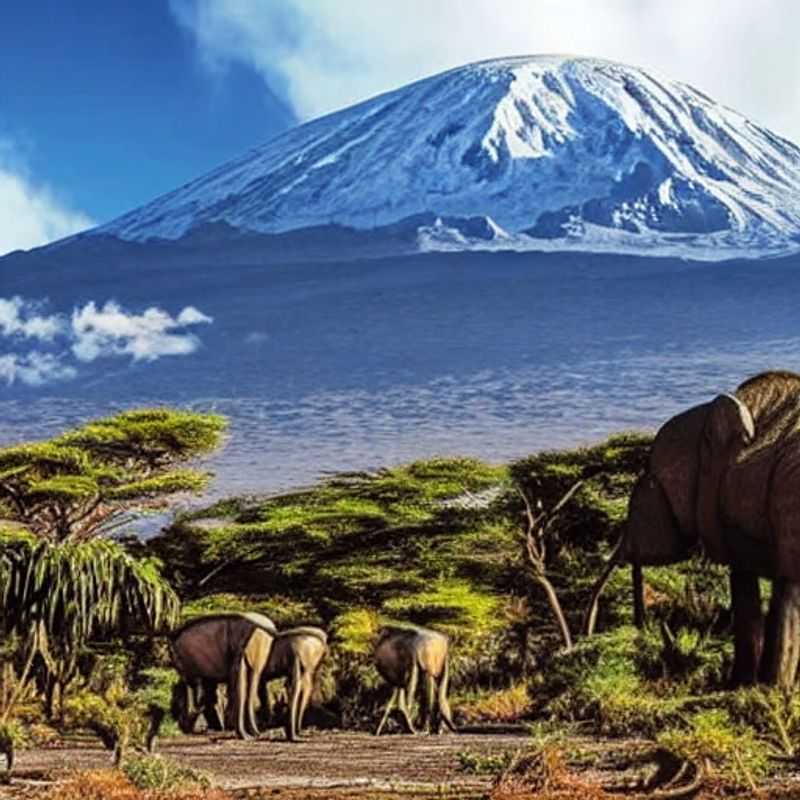
You may also like
Kilimanjaro in Summer: Peak Season Prices & the Human Story Behind the Hike
Climbing Kilimanjaro in Summer: Is it Worth the Price? (A Guide's Perspective)
Tanzania's Kilimanjaro in July: Sun, Snow, and Surprising Savings (Maybe!)
Beat the Kilimanjaro Rush: Summer Hiking & Smart Budgeting Tips
Kilimanjaro's Highs and Lows: Summer Prices and the Unforgettable People You'll Meet
Exploring Kilimanjaro's Summit: A Summer Adventure Balancing Budget and Cultural Immersion
Is Kilimanjaro's Summer Heat Worth the Hike? (A Cost-Benefit Analysis from the Heart of Africa)
Summer on Kilimanjaro: Managing Peak Season Costs Without Compromising the Experience
Jambo, fellow adventurers! I'm your guide, ready to whisk you, four discerning business travelers, on an unforgettable Kilimanjaro expedition! We'll navigate the price fluctuations between winter and spring, ensuring a luxurious yet sensible experience.
Let's talk logistics. Winter (June-October) and spring (March-May) are peak seasons on Kilimanjaro, meaning prices for permits, guiding services, and accommodation will be higher. Expect to pay significantly more during these periods compared to the shoulder seasons (November-February and May). A 7-day climb, including all permits and a reputable guide, can cost between $3,000-$5,000 per person during peak season. This excludes flights, visas, and personal spending money.
Now, the culinary delights! Prepare yourselves for delicious Tanzanian cuisine. Think hearty stews, nyama choma (grilled meat), and chapati (flatbread). Local markets offer vibrant spices and fresh produce. Dinner in Moshi, a gateway town, might cost $20-$30 per person, a bit more in upscale restaurants. On the mountain, meals are typically included in your climb package, catering to your needs during the challenging ascent.
Transportation? Expect a mix of private vehicles and possibly a domestic flight to Kilimanjaro International Airport (JRO), which adds to the overall cost. A private car from JRO to Moshi could cost around $50-$80. Internal transportation during your climb is arranged by your tour operator.
The cultural immersion is part of the magic. Meet the Chagga people, renowned for their coffee plantations and welcoming nature. Observe their vibrant traditions, the sounds of their music, and experience the warmth of their hospitality. The mountain itself, with its unique flora and fauna, offers a breathtaking spectacle. You'll see giant lobelia and senecio plants and possibly encounter some fascinating birdlife.
Regarding the weather, winter offers crisp, clear days with cool nights, ideal for trekking. Spring brings more pleasant temperatures and potentially some rain, but the views remain stunning. Both seasons offer incredible photographic opportunities. The mood among fellow climbers is generally one of excitement, mutual support, and shared achievement. You’ll find yourselves bonding over shared experiences and the awe-inspiring beauty of the surroundings.
A rough estimate for a seven-day Kilimanjaro climb for two couples, including flights from a major international hub (e.g., London or New York), accommodation in Moshi, permits, guide, meals, and internal transport, might range from $24,000 - $40,000 in total. This is an estimate, and the final cost will depend on your choices for flights, accommodation, and optional activities. Always book with reputable operators to ensure safety and quality.
Remember, Kilimanjaro is a challenging but rewarding climb. Proper planning and a fit physique are crucial. This trip requires meticulous planning and booking well in advance, especially during peak seasons. Let’s make your Kilimanjaro adventure a once-in-a-lifetime experience!
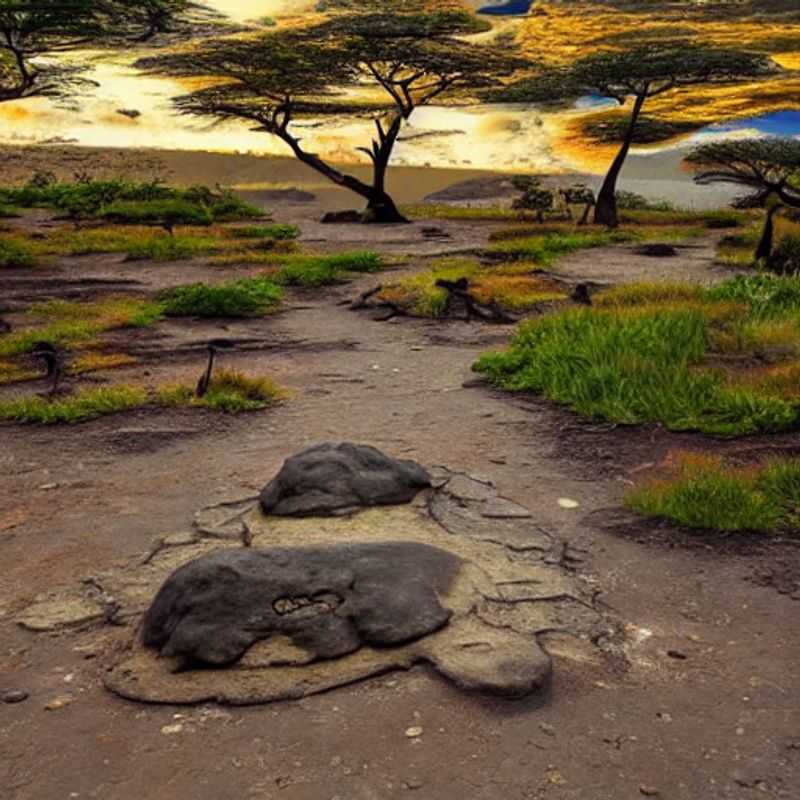
You may also like
Kilimanjaro in Summer: Beat the Heat or Beaten by It? A Guide's Honest Take
Climbing Kilimanjaro in Summer: Sun's Out, Fun's Out (But Pack Your Sunscreen!)
Is Kilimanjaro a Summer Sizzler? A Tour Guide's Perspective on Heat and Hiking
Conquering Kilimanjaro's Heat: A Safe and Adventurous Summer Ascent
Kilimanjaro in the Summer Sun: Minimizing Risks and Maximizing Memories
Summer on Kilimanjaro: Heat, Heights, and the Human Story
Feeling the Heat on Kilimanjaro: A Guide to Responsible Summer Trekking
Avoiding the Kilimanjaro Heatstroke: Tips for a Safe Summer Climb
Kilimanjaro's Summer Challenge: Adventure and Acclimatization
The Kilimanjaro Heat Factor: A Summer Traveler's Guide
Jambo, fellow adventurers! So, you four intrepid business travelers are eyeing Mount Kilimanjaro, eh? Fantastic choice! But let's talk strategy, specifically about beating the heat between winter and spring. This isn't your average boardroom meeting; we're talking altitude and potential for heat-related illnesses, something easily mitigated with planning. Winter (June-October) and spring (November-May) in Kilimanjaro present unique challenges: sunny days and cooler nights. While it’s not the scorching Sahara, the sun’s intensity at altitude can still catch you off guard. Dehydration is the biggest enemy here, my friends.
Now, about those cultural nuances. The Chagga people, indigenous to the slopes of Kilimanjaro, are known for their warm hospitality. Expect smiles, hearty greetings, and perhaps a glimpse into their coffee farming traditions – the aroma alone is worth the climb! Their cuisine is simple yet delicious: think hearty stews, plantains, and nyama choma (grilled meat) – a feast for the senses. You'll find local markets brimming with colorful fruits and vegetables, a true testament to the rich volcanic soil. Budget around $50-75 per day per person for food and drinks, allowing for some delightful culinary adventures.
Musical sounds? Expect a vibrant blend of traditional rhythms and modern influences. The sounds of nature – birdsong, the rush of rivers, and the wind whistling through the giant heather – are equally enchanting. The architecture is a mix of modern constructions in Moshi town and traditional round huts higher up the mountain, showing the evolving cultural landscape. As for pets, expect to see dogs and goats near villages. The atmosphere amongst fellow climbers is generally positive, everyone sharing a sense of accomplishment. However, remember to respect the environment – let's keep this incredible mountain pristine.
Transportation is key. Getting to Moshi from Kilimanjaro International Airport (JRO) will typically cost you around $30-$50 per taxi. A guided climb is non-negotiable for safety – plan on $1500-$3000 per person for a reputable guide and porters, which is essential for a safe and successful summit attempt, and the price varies heavily depending on the level of luxury and the length of the trek. Your tour operator can help you with all these arrangements. Accommodation near the park will run you approximately $50-$150 per night per couple, depending on your choice. It’s worth opting for a place with a pool to help you recover after a day of hiking.
Let's talk preventative measures against heatstroke. Hydration is paramount. Carry plenty of water, consider electrolyte drinks, and sip regularly throughout the day. Sunscreen, hats, and sunglasses are absolute must-haves. Pace yourselves during climbs and take frequent breaks in the shade. Listen to your body, and don't hesitate to descend if you feel any signs of heat exhaustion. Remember, a successful Kilimanjaro trek is about more than just reaching the summit; it’s about enjoying the journey responsibly and safely.
Considering all factors, a safe and comfortable trip for two couples to Kilimanjaro, including flights (not included in the estimate above), accommodation, guiding, transport, food and activities could easily total around $10,000 - $18,000. This is a ballpark figure, and it heavily depends on your choice of flight, accommodation and climbing package. Remember to factor in travel insurance, too. Have a phenomenal trip, and remember – pole pole (slowly slowly)!
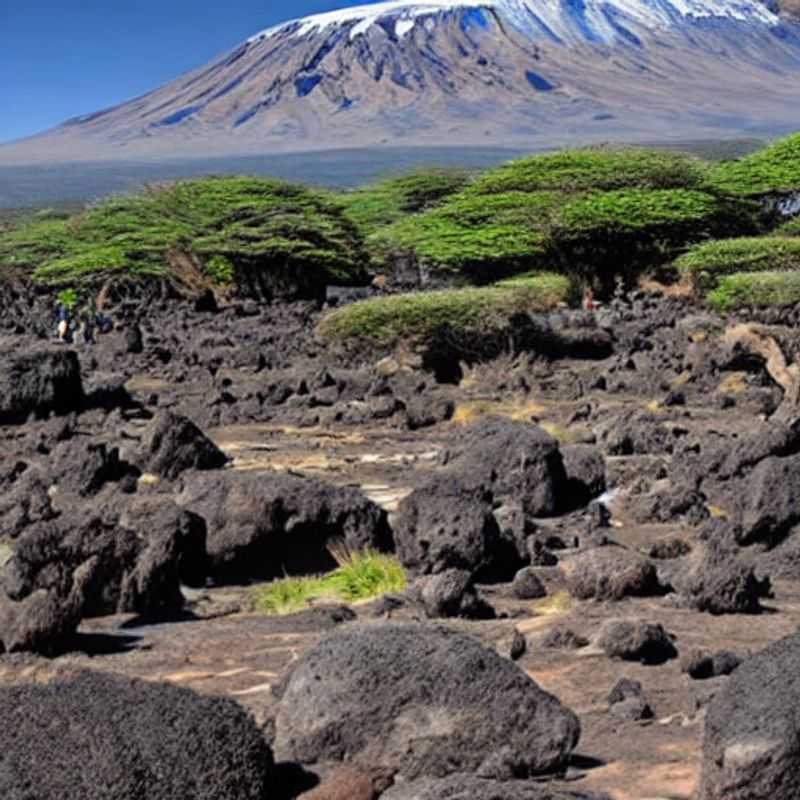
You may also like
Kilimanjaro in Summer: Sun-Kissed Summits & Daylight Adventures!
Chasing the Sun on Kilimanjaro: Is Summer the Right Time for YOUR Climb?
Tanzania's Kilimanjaro in Summer: Maximizing Daylight for an Unforgettable Trek
Sun, Snow, and Stories: A Summer Kilimanjaro Adventure (with Plenty of Daylight!)
Kilimanjaro's Summer Secret: Long Days, Stunning Views, and Memorable Encounters
Daylight Delights: Planning Your Summer Kilimanjaro Expedition
High Altitude, High Spirits: Making the Most of Daylight Hours on Mount Kilimanjaro
Beyond the Summit: Exploring Tanzania's Wonders with Extended Summer Daylight
Jambo, fellow adventurers! As your seasoned African tour guide, I'm thrilled to craft the perfect Kilimanjaro experience for two discerning couples – the ultimate Business Traveler's escape! We're talking winter-spring transition, ideal for those daylight hours dedicated to exploring the majestic mountain.
Think crisp air, breathtaking views, and enough time for both summiting ambition and cultural immersion. Daylight hours during this period are generous, offering ample time for trekking and exploration. You'll find the sun rising earlier and setting later, maximizing your outdoor activity windows.
Now, about the cost. Let's be transparent. A 7-day, 6-night guided Kilimanjaro climb (Machame route, a popular choice for its scenic beauty and relative ease) will cost approximately $3,000-$5,000 per person. This includes park fees, permits, guide services, camping gear, and porters. Internal flights within Tanzania (for example, from Arusha to Kilimanjaro International Airport) add another $300-$500 per person.
Food, ah, the culinary delights! Expect hearty meals reflecting Tanzanian cuisine – think ugali (cornmeal porridge), nyama choma (grilled meat), and a variety of stews. On the mountain, meals are provided by the climbing crew, and they're surprisingly delicious, given the circumstances! Budget roughly $100 per person per day for meals outside the climb. This includes sampling local eateries in Arusha and Moshi.
Transportation costs vary based on your preferences. Private transfers between the airport and your hotel, as well as during excursions, might cost around $50-$100 per day, while using taxis and public transport can significantly reduce this. Remember, safety first, but you might choose to hire a reputable driver.
Beyond the climb, let’s explore the cultural side. Arusha and Moshi offer fascinating glimpses into Tanzanian life. Visit the Maasai Market for vibrant crafts and unique souvenirs, interact with local artisans, and learn about their traditions. Expect to spend around $50-$100 on souvenirs and gifts.
Accommodation? Comfortable lodges in Arusha or Moshi typically cost $100-$200 per night per couple. The cost of your accommodation depends greatly on your preference of accommodation.
The weather? Expect cool temperatures, especially at higher altitudes. Pack layers, including thermal underwear, fleece jackets, and waterproof outerwear. The evenings can get quite chilly, even in spring.
The people? Tanzanians are known for their warmth and friendliness. You’ll encounter genuine smiles and a welcoming spirit. Music and sounds vary, from traditional African rhythms to contemporary beats. Observe the local architectural styles – a blend of traditional and modern influences. You might see locals playing instruments like the ngoma drum.
Total estimated cost for this incredible adventure for two couples (4 people)? Approximately $20,000 - $30,000. This is an estimate, and costs can vary depending on your choices. This is a once in a lifetime experience, one that balances thrilling adventure with profound cultural encounters.
Remember, always consult travel advisories and pack appropriate safety gear. Embrace the journey, savour the moments, and create memories that will last a lifetime. Asante sana, and happy travels!
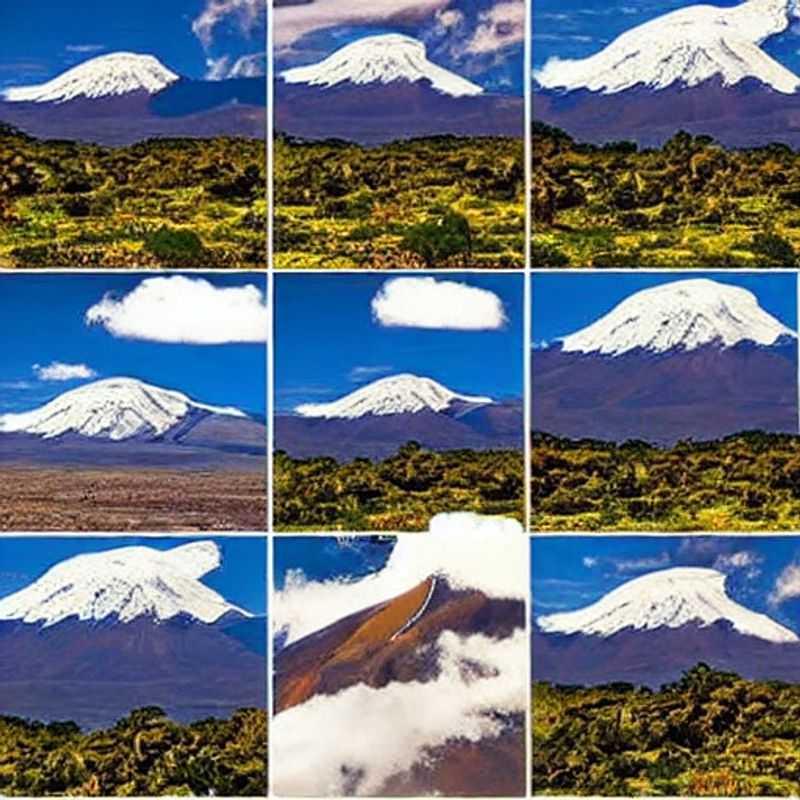
You may also like
Kilimanjaro in Summer: A Festival of Nature & a Feast for the Soul!
Summit Fever & Summer Sun: Timing Your Kilimanjaro Climb for Peak Festivities
Beyond the Summit: Exploring Tanzania's Summer Festivals Alongside Your Kilimanjaro Adventure
Kilimanjaro's Summer Symphony: Wildlife, Weather, and the Rhythm of Tanzanian Celebrations
Is Kilimanjaro in Summer Too Crowded? Navigating the Peak Season & Finding Your Own Tanzanian Rhythm
From Mountain Majesty to Cultural Merriment: A Kilimanjaro Summer Itinerary Packed with Adventure and Authenticity
The Kilimanjaro Conundrum: Summer Heat vs. Festival Cheer – Finding the Perfect Balance
A Kilimanjaro Summer Adventure: Tales from the Trails & Tanzanian Celebrations
Kilimanjaro & the Spirit of Summer: A Journey Through Nature's Grandeur & Tanzanian Culture
Planning Your Kilimanjaro Summer Escape: Festivals, Weather, and Unforgettable Experiences
Jambo, fellow adventurers! Planning a Kilimanjaro trip for you and your friends? Excellent choice! Between winter and spring (roughly June to October), you'll find a delightful mix of Tanzanian culture and stunning mountain scenery. While Kilimanjaro itself doesn't host festivals *on* the mountain, the surrounding areas certainly come alive with celebrations.
The frequency of events varies, but you'll likely find local village festivals celebrating harvests or significant cultural events. These aren't large-scale, tourist-driven affairs, but rather intimate glimpses into the daily life of Tanzanian communities. Expect vibrant music, traditional dances, and delicious local food – think nyama choma (grilled meat), ugali (cornmeal porridge), and pilau (spiced rice). Don't be shy; join in the fun! You'll be welcomed with open arms.
The weather during this period is generally pleasant, with sunny days and cool evenings. Pack layers, as temperatures can fluctuate significantly depending on altitude. Expect to see the iconic acacia trees dotting the landscape, and perhaps spot some local pets like chickens or goats roaming freely. The architecture in nearby towns will showcase a blend of traditional African styles and modern influences. The mood among locals is generally friendly and welcoming. You will often see families gathering for community events. Tourists, particularly those engaged in trekking, are also a common sight.
Let's talk practicalities. Getting around involves a mix of taxis, shuttles, and potentially hiring a driver for longer trips. A round-trip airport transfer to your hotel in Moshi (a popular base for Kilimanjaro treks) might cost around $50-$100. Local meals average around $10-$20 per person, while a more upscale dining experience could be $30-$50. A guided village festival visit might cost you between $50-$150, including transportation and a small contribution to the community. The cost of climbing Kilimanjaro itself is significant, ranging from $2000 to $6000 per person, depending on the route and level of support. This typically includes permits, guides, porters and accommodation during the climb.
Considering two couples, a conservative estimate for a 7-day trip including flights (from a major international hub), accommodation in Moshi, local transport, meals, and perhaps one guided cultural visit would be roughly $8000-$12000 total, excluding the Kilimanjaro climb. Adding in the cost for climbing, that figure jumps significantly to $16,000-$24,000 or more. This is a rough estimate, and the actual cost will fluctuate depending on your preferences.
Remember, this is a journey focused on cultural immersion and breathtaking landscapes. Be respectful of local customs, embrace the unexpected, and prepare to be charmed by the warmth and generosity of the Tanzanian people. Asante sana, and happy travels!
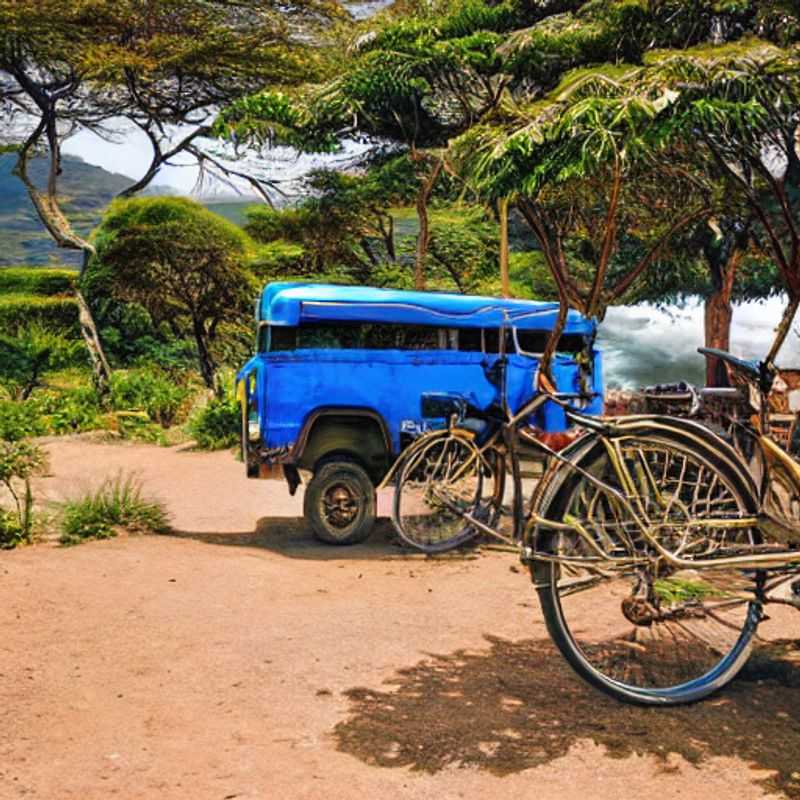
You may also like
Kilimanjaro in Summer: Accessible Adventures for All? A Guide's Perspective
Scaling Kili: Is the Roof of Africa Accessible for Your Summer Holiday?
Conquering Kilimanjaro: Accessibility and Summer Adventures – A Journey for Everyone?
Sun, Snow, and Smooth Sailing? Exploring Kilimanjaro's Accessibility in Summer
Kilimanjaro's Summer Call: Accessible Routes and Unforgettable Experiences
A Summer Ascent: Is Kilimanjaro Truly Accessible for Every Traveler?
Beyond the Summit: Accessibility and the Human Story of Kilimanjaro in Summer
Jambo, fellow adventurers! As your seasoned safari guide, I'm thrilled to craft the perfect Kilimanjaro experience for two discerning couples – the business traveler type, I understand your need for efficiency and comfort.
Let's talk logistics for your winter/spring Kilimanjaro escapade. The best way to reach Kilimanjaro from major international airports (like Dar es Salaam or Nairobi) is via a domestic flight to Kilimanjaro International Airport (JRO). Expect to pay around $200-$400 per person for this, depending on booking time and airline. From JRO, you'll have a few options to reach your starting point for the climb: 4x4 vehicles are readily available for hire at roughly $100-$150 per day. Consider hiring a driver for the entire trip for convenience and safety. Local buses are cheaper ($5-$10 per person per ride) but less comfortable and take much longer. We will arrange this for you, of course!
Once at the base of the mountain, you'll be greeted by the vibrant energy of Moshi town, characterized by a blend of Swahili and German colonial architecture. The sounds of Kiswahili chatter mingle with the melodies of local Taarab music. The friendly locals, known for their warm hospitality, will welcome you.
Food is a delight! Expect delicious Swahili cuisine, rich in spices and flavors. Think hearty stews, nyama choma (grilled meat), and fresh tropical fruits. A typical meal in a mid-range restaurant will cost around $15-$30 per person. Remember to try the local Kilimanjaro coffee; it's exquisite!
As for the climb itself, porters and guides are essential – not just for safety, but also for cultural immersion. They share incredible stories and insights into Kilimanjaro's spirit. Hiring a reputable guide and porter team will cost $1500 - $2500 per person, and this is a critical expenditure for safety and a truly authentic experience. This covers permits, equipment, food and accommodation at the mountain camps.
The weather in winter and spring is pleasant, generally sunny days with cooler nights. Pack layers! Expect a mix of sunshine and potential for rain or mist at higher altitudes. Expect temperatures ranging from pleasantly warm to frigid at the summit.
Beyond the climb, consider exploring nearby Arusha National Park, known for its diverse wildlife, or indulging in a coffee plantation tour. These additional activities will add to the overall cost, with entrance fees and tours ranging from $50-$150 per person per activity.
Therefore, a conservative estimate for a 10-day trip for two couples, including flights, transport, accommodation (comfortable lodges near the mountain, before and after the climb), climbing expedition, meals, and some additional activities, would be approximately $20,000 - $30,000 in total. This is an estimate, and the final cost might vary depending on your choices and preferences. This is a once in a lifetime experience, though!
Remember, safety is paramount. Always use reputable tour operators, and ensure you're adequately prepared for the altitude and weather. Let's create an unforgettable Tanzanian adventure! Karibu sana!
